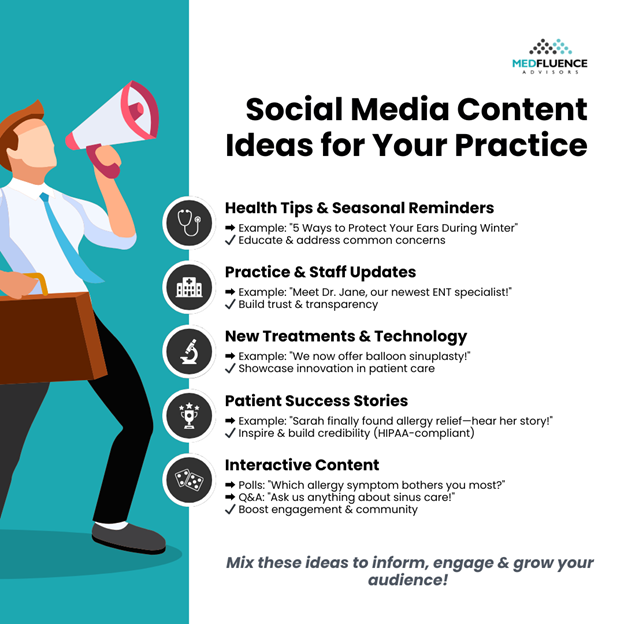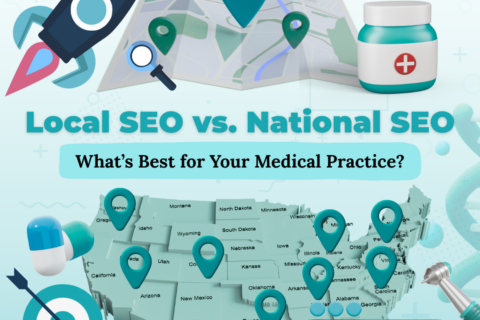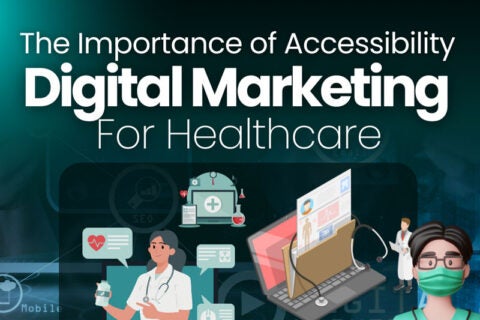Comprehensive Guide to Private Practice Marketing
The numbers tell a compelling story: 77% of patients now begin their healthcare journey with an online search, yet only a small percentage of private practices have a comprehensive digital marketing strategy in place. In today’s healthcare landscape, this disconnect represents both a challenge and an unprecedented opportunity. While medical school equipped you with the skills to provide exceptional care, the rapidly evolving digital marketplace demands a different kind of expertise.
Consider this: practices that implement strategic marketing initiatives see an increase in new patient acquisitions within the first year. Yet for many healthcare providers, the path to achieving these results remains shrouded in mystery. Perhaps you’ve experimented with social media or launched a website, only to find yourself wondering why your digital presence isn’t translating into a flourishing patient base.
The transformation of healthcare marketing is undeniable—from traditional word-of-mouth referrals to today’s complex digital ecosystem, where 61.5% of patients report choosing healthcare providers based on their online presence. This guide emerges from thousands of hours working alongside healthcare providers just like you, distilling proven strategies that bridge the gap between medical excellence and marketing success.
1. Understand Your Audience
The first step to effective marketing is knowing who your patients are and what they need. Think about:
- Demographics: What age group does your practice serve? Do you cater to families, seniors, or a specific group like athletes?
- Location: Where are your patients coming from? Are they local or from nearby cities?
- Specific Needs: Are they looking for preventive care, chronic condition management, or specialized procedures?
By understanding your audience, you can craft messages that resonate. For instance, a pediatric clinic might emphasize tips for child wellness, while a practice focused on senior care could highlight fall prevention and mobility resources.

2. Create a Professional and User-Friendly Website
Your website is often the first interaction patients have with your practice. Make sure it represents you well by focusing on:
- Ease of Use: Ensure visitors can quickly find key details like services, office hours, and contact information.
- Mobile Compatibility: Many people browse the internet on their phones, so your website should look good and function smoothly on smaller screens.
- Clear Calls-to-Action: Encourage visitors to schedule an appointment or contact your office for more details.
- Secure and Reliable Hosting: Patients need to feel safe when sharing their information online, so invest in a secure website platform.

3. Optimize for Local SEO
Search engine optimization (SEO) is a key strategy to make sure your private practice appears in online searches. It involves tailoring your online presence so search engines like Google can easily match your services to what potential patients are searching for. Since healthcare is often location-specific, focusing on local SEO is particularly important. Local SEO ensures that nearby patients can find you when they search for services like yours. Here are essential steps to make your local SEO efforts more effective:
Claim and Optimize Your Google Business Profile
Your Google Business Profile is one of the most powerful tools for local SEO. When someone searches for a service like “doctor near me,” Google uses this profile to show information about local businesses. Claim your profile (if you haven’t already) and make sure it’s fully updated with accurate details such as:
- Business Name: Ensure it matches your signage and website.
- Address: Use your full, correct address to avoid confusion.
- Phone Number: Provide a working number patients can easily call.
- Hours of Operation: Include regular and holiday hours.
- Service Categories: Choose categories that align closely with your services, like “allergy clinic” or “pediatrician.”
- Photos: Add high-quality pictures of your office, staff, and services to build trust and make your practice look approachable.
A complete and up-to-date profile increases your chances of appearing in the “Local Pack,” the section of search results that highlights local businesses with a map and key details.
Incorporate Local Keywords
Keywords are the phrases people type into search engines to find services. For a private practice, using local keywords helps Google connect your business to searches in your area. Strategically place these keywords in your website’s key areas, including:
- Homepage: Mention your location in the introduction or tagline.
- Service Pages: For instance, if you’re an ENT specialist, use phrases like “ENT specialist in [City]” or “ear and throat doctor near [Neighborhood].”
- Blog Posts: Write posts about local topics, like “How Allergies Affect People in [City].”
- Meta Descriptions: These are the short summaries that appear under your website link in search results.
Be sure your content sounds natural; avoid overusing keywords (a practice known as keyword stuffing), which can harm your ranking and readability.
Encourage Positive Reviews
Online reviews play a significant role in local SEO. Potential patients often read reviews to decide if they should visit your practice. Search engines also use reviews to gauge your reliability and relevance. Encourage satisfied patients to leave reviews on platforms like:
- Google: Positive feedback here helps you rank higher in search results.
- Yelp: This platform is widely used for local businesses, including healthcare.
- Facebook: Patients can leave reviews and recommendations here as well.
When you receive a review, respond professionally—even to negative feedback. A polite and helpful response can show that you value patient experiences and are willing to improve.
Maintain Consistent Listings
Search engines rely on accurate and consistent information about your practice. If your business name, address, or phone number (NAP) varies across directories, it can confuse both search engines and potential patients. To avoid this:
- Audit Your Listings: Check your practice’s details on Google, Yelp, Healthgrades, and other platforms to ensure consistency.
- Fix Errors: Update any outdated or incorrect information.
- Use a Single Format: For example, if your address includes “Street,” don’t abbreviate it to “St.” on some listings while spelling it out on others.
You can also use tools or services to manage and sync your listings across multiple platforms automatically, saving time and ensuring accuracy.
Why Local SEO Matters
Local SEO doesn’t just improve your online visibility—it also helps patients trust your practice. When they see accurate information, positive reviews, and engaging content tailored to their area, they’re more likely to choose your services. By following these steps, you can make it easier for nearby patients to find you and grow your practice effectively.
4. Engage Through Social Media
Social media has become a powerful tool for connecting with your audience and building a sense of community around your private practice. It provides a platform where you can share valuable information, humanize your practice, and create lasting relationships with both current and potential patients. With billions of users on platforms like Facebook, Instagram, and LinkedIn, the potential reach is significant—if you use these tools effectively.
Choosing the Right Platforms
Start by identifying the platforms your target audience is most likely to use:
- Facebook: Ideal for connecting with a broad audience, including families, seniors, and local communities.
- Instagram: Best for visual storytelling, engaging younger demographics, and sharing photos or videos.
- LinkedIn: Useful for connecting with professionals and highlighting your credentials or expertise, especially if your practice serves a corporate audience.
You don’t need to be on every platform. Focus on two or three where your audience is active and tailor your content accordingly.
Content Ideas for Social Media Posts
To engage your audience effectively, mix educational, promotional, and interactive content. Here are some ideas:
- Health Tips and Seasonal Reminders Share practical advice that resonates with your patients’ needs, such as:
- “5 Ways to Protect Your Ears During Winter.”
- “Why You Should Schedule Your Allergy Test Before Spring.” These posts position your practice as a trusted source of health information while addressing common concerns.
- News About Your Practice or Staff Keep your audience updated with posts about your team and practice milestones, such as:
- New staff introductions: “Meet Dr. Jane, our newest ENT specialist!”
- Practice upgrades: “We’ve added cutting-edge imaging equipment to better serve our patients.” Sharing this kind of news makes your practice feel more relatable and transparent.
- Updates on New Treatments or Equipment If you’ve adopted new procedures, treatments, or technology, let your followers know:
- “We now offer balloon sinuplasty—a minimally invasive treatment for chronic sinusitis.”
- “Our state-of-the-art hearing aids are here to help you reconnect with the sounds you love.” Highlighting advancements shows your commitment to providing top-tier care.
- Patient Success Stories (With Permission) Testimonials or stories from patients who have had positive outcomes are incredibly powerful. For example:
- “After years of struggling with allergies, Sarah finally found relief at our clinic. Hear her story!” Always get written permission before sharing patient information and keep it HIPAA-compliant.
- Interactive Content Social media thrives on interaction. Engage your followers with:
- Polls: “Which spring allergy symptom bothers you the most?”
- Q&A Sessions: “Have questions about sinus care? Drop them below, and we’ll answer!”
- Challenges: “Take our hydration challenge: Drink 8 glasses of water a day for a week and feel the difference!”

Why Consistency Matters
Posting consistently is key to staying visible on social media. Develop a posting schedule that works for you, such as three times a week, and stick to it. Consistency helps keep your practice top of mind for your audience and encourages more engagement over time.
How to Make Posting Easier
If managing social media feels overwhelming, consider these tips:
- Use Scheduling Tools: Platforms like Hootsuite or Buffer allow you to plan and schedule posts in advance.
- Repurpose Content: Turn blog posts into social media snippets or infographics.
- Delegate: Assign a team member to manage your accounts or hire a social media specialist.
Building Trust and Community
By actively engaging with followers—replying to comments, answering questions, and thanking patients for their feedback—you show that you care. This fosters trust and strengthens your relationship with the community, making your practice the go-to choice for healthcare services.
With a thoughtful social media strategy, you can not only inform and educate but also inspire loyalty and attract new patients to your practice.
5. Leverage Content Marketing
Content marketing builds trust and positions your practice as a valuable resource for health information. It also improves your website’s SEO, making it easier for potential patients to find you online.
Why Content Marketing Matters
Many patients search for health information online before contacting a provider. By offering educational and engaging content, you can:
- Provide answers to common questions.
- Build trust and credibility.
- Showcase your expertise in a way that reassures patients.
When done well, content marketing helps attract and retain patients.
Types of Content to Create
A variety of content formats can keep your audience informed and engaged:
1. Educational Blog Posts
Blogs address common concerns and offer practical advice. Examples:
- “How to Manage Seasonal Allergies” provides prevention tips and treatment options.
- “When to See a Specialist for Sinus Issues” explains signs that over-the-counter remedies aren’t enough.
Blogs also improve SEO by naturally including local keywords like “ENT specialist in [City].”
2. Videos
Short, engaging videos are great for explaining procedures or sharing wellness tips. Ideas include:
- Procedure walkthroughs, such as “What to Expect During a Balloon Sinuplasty.”
- Behind-the-scenes tours to introduce your team and facilities.
Keep videos under three minutes and share them on your website or social media.
3. Infographics
Infographics visually explain complex topics, making them easier to understand. Use them for:
- Preventive tips, such as “How to Avoid Winter Allergies.”
- Medical explanations, like sinusitis symptoms and treatments.
These can be used on your website, in social media posts, or even as handouts in your office.
4. FAQs
Frequently asked questions address patient concerns, such as:
- “What should I bring to my first appointment?”
- “How do I know if I need allergy testing?”
FAQs not only help patients feel prepared but also reduce repetitive calls to your office.

5. Patient Success Stories
With permission, share testimonials from patients who have had positive outcomes. These stories demonstrate your expertise and create emotional connections with prospective patients.
Boosting SEO Through Content
Well-crafted content can significantly enhance your SEO by:
- Using Keywords: Incorporate phrases like “ENT specialist near me” naturally within your content.
- Adding Internal Links: Connect blog posts to service pages or appointment forms.
- Optimizing for Mobile: Ensure all content is easy to view on smartphones and tablets.
Tips for Effective Content Marketing
- Plan Ahead: Use a content calendar to schedule posts and maintain consistency.
- Repurpose Content: Turn a blog post into a video or infographic to reach different audiences.
- Track Metrics: Monitor traffic, engagement, and conversion rates to measure success.
By leveraging content marketing, you educate your community, improve your online visibility, and build lasting patient relationships.
6. Participate in Community Events
Getting involved in your community can increase your practice’s visibility and build goodwill. Consider these ideas:
- Host Health Seminars: Offer free workshops on topics like stress management or nutrition.
- Partner with Schools or Gyms: Collaborate on events that promote healthy living.
- Sponsor Local Events: Support sports teams, charity drives, or festivals in your area.
- Volunteer: Organize or participate in health fairs or free screening days.
Engaging with the community shows that you care, which can encourage people to choose your practice.
7. Use Email Marketing to Stay Connected
Email campaigns can help you communicate directly with patients. Ideas for email content include:
- Monthly newsletters with health tips and updates
- Appointment reminders
- Announcements about new services or office hours
- Seasonal messages like flu shot availability or holiday hours
Make sure you comply with email marketing laws and only send messages to those who have opted in.
8. Invest in Paid Advertising
Paid advertising can help your practice reach more people. Options include:
- Google Ads: Appear at the top of search results for terms like “family doctor near me.”
- Social Media Ads: Target specific audiences by location, interests, or age.
- Local Media: Advertise on community radio stations, newspapers, or newsletters.
Set a clear budget and track the performance of your ads to ensure you’re getting results.
9. Track and Analyze Your Marketing Efforts
To know what’s working, monitor your marketing performance. Tools like Google Analytics can help you track:
- Website traffic
- Conversion rates (how many visitors book appointments)
- Engagement rates on social media
- Email open and click-through rates
Use this data to refine your strategies and focus on the methods that bring the best results.
10. Focus on Patient Experience
Your best marketing tool is a happy patient. A positive experience often leads to referrals and great reviews. Key elements of excellent patient care include:
- Warm and Friendly Staff: First impressions matter, so ensure your team greets patients warmly and provides clear communication.
- Short Wait Times: Respect your patients’ time by keeping appointments on schedule.
- Follow-Up Care: Send reminders or thank-you messages after appointments to show patients you care.
Encourage feedback through surveys or suggestion boxes and use it to improve your services.
Marketing a private practice takes effort, but the results are worth it. By understanding your audience, building a strong online presence, and engaging with your community, you can create a strategy that feels approachable and effective. Start small by focusing on one or two tactics, and expand your efforts as you grow. With time and consistency, you’ll establish your practice as a trusted resource in your area.
Transforming Insights into Action
Your journey to marketing excellence doesn’t end here. Every insight in this guide represents an opportunity to elevate your practice’s presence and connect with patients who need your expertise. The healthcare landscape continues to evolve, but one truth remains constant: successful private practices are built on a foundation of strategic marketing and authentic patient relationships.
Ready to join the private practices reporting significant growth through strategic marketing? Partner with Medfluence to transform these marketing insights into real-world results. Our team of healthcare marketing specialists will work alongside you to implement these strategies and create a customized growth plan that aligns with your practice’s unique values and goals.
Visit Medfluence today to schedule your complimentary practice growth consultation and start your journey toward a thriving, sustainable practice.
Short on time? Grab our downloadable PDF here!


